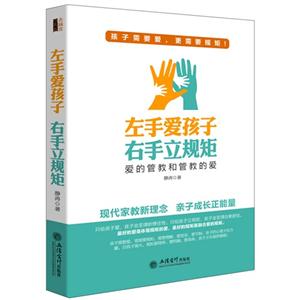基于语料库的中国英语学习者搭配学习横向性研究-(英文版)

|
基于语料库的中国英语学习者搭配学习横向性研究-(英文版)作者:门海燕 开 本:32开 书号ISBN:9787313159496 定价:58.0 出版时间:2016-11-01 出版社:上海交通大学出版社 |
基于语料库的中国英语学习者搭配学习横向性研究-(英文版) 本书特色
由门海燕所*的《基于语料库的中国英语学习者搭配学习横向性研究(英文版)》基于中国学习者英语语料库,以三组英语水平所写的作文为研究对象,具体研究其在动词 名词,形容词 名词和名词 名词三类搭配中的使用,发现随着英语水平的提高,中国英语学习者的动名搭配学习出现滞后;而其他两种类型的搭配随着英语水平的提高而提高;动词 名词搭配滞后与高水平英语学习者动词词汇量增长有关,即高水平英语学习者近义词集合中词汇增长越密集,错误就越多。研究结果不但有助于我们进一步了解学习者搭配习得,而且对如何有效地学、教搭配具有很大的启示意义。
本书可供应用语言学或语料库语言学领域的研究者、英语老师及英语语言学专业的研究牛阅读参考。
基于语料库的中国英语学习者搭配学习横向性研究-(英文版) 目录
CHAPTER 1 INTRoDUCTIoN 1.1 General background 1.2 Aims of the study 1.3 The shape of the study CHAPTER 2 THE NOTl0N OF COLLOCATION 2.1 The importance of collocation 2.1.1 The pervasiveness of phraseological tendency 2.1.2 The importance of collocation for L2 1earners 2.1.3 Summary 2.2 The notion of collocation 2.2.1 Collocation previously approached 2.2.2 Collocation defined in this study 2.2.3 Collocations classified in this study 2.2.4 Summary CHAPTER 3 COLLOCATION STUDIES IN SECOND LEARNER ENGLISH 3.1 Methodologies adopted in L2 collocation studies 3.1.1 Elicitation data—based collocation studies 3.1.2 Spontaneous data—based collocation studies 3.2 Previous findings from L2 collocation research 3.2.1 Forms of collocation deficiency:overuse,underuse and misuse 3.2.2 The role of learners’L1 3.2.3 Collocation lag CHAPTER 4 RESEARCH DESIGN 4.1 Research purpose and questions 4.2 The selection of verb noun,adiective noun and noun noun collocations 4.3 The learner corpus—CLEC 4.4 Collocation dictionaries for reference 4.5 The reference corpus——BNC 4.6 Software for retrieval and analysis 4.7 Procedure 4.7.1 Tagging and reliability check 4.7.2 Investigation of verb noun collocations 4.7.3 Investigation of adjective noun and noun noun collocations 4.8 Summary CHAPTER 5 CHINESE LEARNERS’PRODUCTl0N OF COLL0CATIONS 5.1 Overall analyses(1):general patterns of VN collocation produced by L2 learners 5.1.1 Overall tokens of collocations 5.1.2 Overall types of collocations and collocation distribution 5.1.3 Collocation misuses 5.1.4 Synopsis of overall analyses(1) 5.2 Overall analyses(2):between—group comparisons of delexical VN collocations 5.2.1 Between—group comparisons of well—formed De LexVN collocations 5.2.2 Between—group comparisons of erroneous De LexVN collocations 5.2.3 Synopsis of overall analyses(2) 5.3 Overall analyses(3):verb growth and collocation errors 5.4 Synopsis of the overall analyses of verb noun collocations CHAPTER 6 VERB INCREASE AND THE PRODUCTION OF COLLOCATIONS 6.1 Detailed analyses—verb increase and collocation uses 6.1.1 Analysis of VN collocations within synsets identified at the ST2 and ST6 levels 6.1.2 Analysis of VN collocations within synsets identified at the ST2,ST5 and ST6 levels 6.2 Synopsis of detailed analyses of verb increase and collocation uses 6.3 An alternative explanation:new nouns and collocation uses 6.3.1 New nouns in the ST6 VN collocations(new as with the ST2 level) 6.3.2 New nouns in the ST6 VN collocations(new as compared wit level)and new nouns in the ST5 VN collocations(new as comp the ST2 level) CHAPTER 7 CHINESE LEARNERS’PERFORⅣIANCE ON ENGLISH ADJECTIVE NOUN AND NOUN NOUN COLLCATIONS 7.1 Analyses of adjective noun collocations 7.2 Analyses of noun noun collocations 7.3 Synopsis of the analyses of adjective noun and collocations CHAPTER 8 COMPARISON AND INTERPRETATION OF LEARNERS’ PERFORMANCE ON THE THREE TYPES OF COLLOCATIONS 8.1 Collocation errors in the three types of collocations 8.2 Vocabulary growth and collocation errors 8.3 Synsets and collocation produ 8.4 Synopsis of the findings in this chapter CHAPTER 9 THE ROLE OF L1 IN COLLATION LEARNING 9.1 The notion of congruence 9.2 Within--group comparison of well formed and erroneous and non—congruent VN collocations 9.3 Between group comparison of well formed and erroneous and non—congruent VN collocations 9.4 Within—group comparison of positive and negative L1 influence VN and AN collocations 9.5 Synopsis of findings in this chapter CHAPTER 10 SUMMARY AND CONCLUSl0NS 10.1 Summary 10.2 Implications 10.2.1 Theoretical implications 10.2.2 Pedagogical implications 10.3 Limitations and ways forward APPENDlCES REFERENCES INDEX REFERENCES/ INDEX/
外语 英语学术著作
在线阅读
- 最新内容
- 相关内容
- 网友推荐
- 图文推荐
上一篇:大学英语以听促写教程
下一篇:雅思精品阅读
零零教育社区:论坛热帖子
| [高考] 2022 西安电子科技大学《软件工程》大作业答案 (2022-04-25) |
| [家长教育] 孩子为什么会和父母感情疏离? (2019-07-14) |
| [教师分享] 给远方姐姐的一封信 (2018-11-07) |
| [教师分享] 伸缩门 (2018-11-07) |
| [教师分享] 回家乡 (2018-11-07) |
| [教师分享] 是风味也是人间 (2018-11-07) |
| [教师分享] 一句格言的启示 (2018-11-07) |
| [教师分享] 无规矩不成方圆 (2018-11-07) |
| [教师分享] 第十届全国教育名家论坛有感(二) (2018-11-07) |
| [教师分享] 贪玩的小狗 (2018-11-07) |






